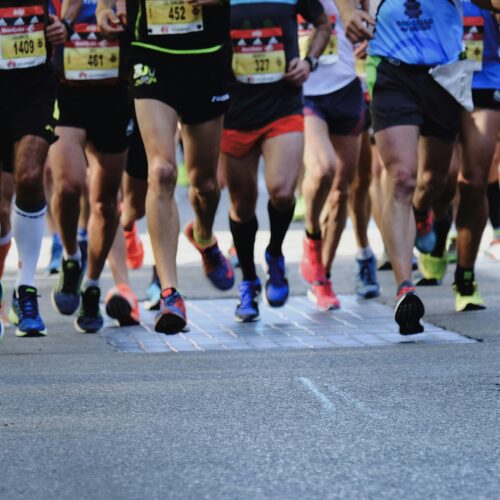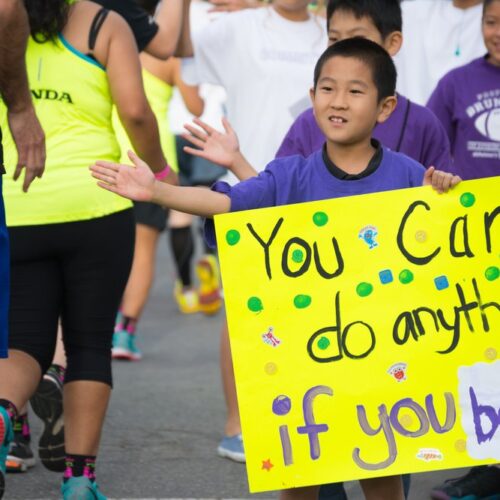Tips for Victoria Marathon Race Weekend
Published on October 6, 2017It’s Race Weekend!
Good luck to everyone racing this weekend! The hardest aspect of racing is the months of preparation leading up to race day, and if you’re toeing the line this Sunday you’ve already won the main part of the challenge. The race itself is a celebration of what you’ve accomplished in your training through a long hot (and smoky) summer!
Here are some last minute tips and logistical information that might prove helpful over the next couple of days:
CARB LOADING
The day before the race is the most important time to be loading up on extra carbohydrates. You shouldn’t be eating more food overall, but you should be trying to ingest a much larger percentage of carbohydrates than you would normally (in relation to fats and protein). Some studies have suggested that up to 90% of your calories the day before a race should come from carbs. Here are some general rules to follow:
1. Don’t change the type of foods you eat the day before and the day of the race. Eat the same types of carbs that you normally eat, just eat more of them.
2. Don’t eat more food than you would normally eat. The size of your plate should remain the same. Only the percentage of carbs to proteins and fats should change.
3. Try to drink 2 litres of water (or other liquids as long as it’s not a diuretic like coffee or alcohol) throughout the day.
4. A good way to ingest a lot of carbohydrates without feeling too full is to drink your carbs in the form of juices or shakes (this also helps with your hydration goal).
4. Don’t try something the day before a race or on race day that you haven’t tried in training.
Here is a great article on carbo loading (although it specifies the marathon distance, it is useful information for any event that takes over 90 minutes).
PRE-RACE BREAKFAST
Ideally, on the morning of the race, you should wake up early enough (2 to 3 hours before race time) to have a high carbohydrate meal. An example might be a small bowl of oatmeal with bananas and honey. Once again though, don’t try a new food that you haven’t experimented with in training. Whatever type of food your body is most accustomed to is the best bet at this stage.
WARM-UP
1. 1 hour before race start – Mobility Routine
2. 50 minutes before race start – 10 minutes easy jogging
3. 40 minutes before race start – Form Drills and 4 x 20 second strides
4. 20 minutes before race start –
Half Marathoners: Run 1 minute hard (at 20 seconds/km faster than Lactate Threshold). To understand why we do this before racing, check out the following article and read the section entitled “I Can’t Catch My Breath!”.
Marathoners: Run 1 minute at your goal pace to tune into your race rhythm.
5. 19 minutes before race start – Last bathroom break and find your place on the starting line. Keep warm by jogging on the spot or doing a 10 or 20 second fast feet exercise every few minutes.
6. RACE HALF MARATHON OR MARATHON!
FUELLING
Take a gel (or the equivalent) 10 minutes before the start and then half a gel every 20 to 30 minutes. Taking less fuel but more often is a good strategy because it maintains your blood sugar at a more even level and it’s less stressful on your stomach.
HYDRATION
“Drink to Thirst”. This means that you should only take in enough water (or carb drink) to satisfy your thirst. There is now more of a trend towards over-hydrating during races (and actually gaining weight by the end of the race) than under-hydrating.
PACE PLAN
For those of you still unsure of how to work out your pace for the race, my general advice is to that you increase your pace every 7 km for the half marathon and every 14 km for the marathon. Start out at 5 seconds/km slower than your goal pace for the first third of the race, run at your goal pace for the middle third, and finally run 5 seconds/km faster than your goal pace for the final third. For example, if your goal is to run 5:10/km for the full race, you would try to run the first third at 5:15/km, the middle third at 5:10/km, and the final third at 5:05/km.
FORM CUES
1. Stay Relaxed: Face, shoulders, hands (and, perhaps most important of all, in your mind).
2. Run Light: Run “off your insoles” rather than off the ground. This creates a light, fast push-off. Don’t over-stride and pound the ground.
3. Posture: Run tall (with an imaginary string attached to the top of your head pulling you towards the sky) and with a slight forward lean (from your ankles not from your waist).
4. Arms: 90 degrees at the elbows and thumbs relaxing on top of relaxed hands.
MENTAL APPROACH
My best performances occur when I stand on the start line with my mind focused on what I can control in the moment and not on what I wasn’t able to accomplish in my build up to the race (what is past is past!). Things may or may not have gone smoothly in my training, but I make the decision every time I toe the start line to do the best I can on the day. If the pace that I ideally wanted to run is feeling too difficult right from the start (or at any stage of the race), I don’t fight against it and keep pushing hard even though I know that it can’t be maintained (for a half marathon I know that I can’t be breathing hard before the final 20 minutes or so). Instead, I do my best to find the pace that I know I can maintain to the finish. I also make the decision to finish the race feeling like I’ve given my best effort. So, even if I finish feeling a bit disappointed with my actual time or place, I can always be happy with the fact that I did whatever I could on the day. In a sense, the physical side of the event is completed with your training but, in the race itself, it is your mental approach that will allow you to get the most out of the fitness that you’ve built.
My final piece of advice: Enjoy yourself out there! Not only does focusing on the enjoyment of running (and the fact that you’re able to do this great activity in the first place) make for a much more pleasant experience out there, but your body also performs to it’s greatest potential when you’re relaxed. A friend of mine on the UBC cross country and track team said she always tried to smile at every mile marker when she raced and she found it really helped her performances. Try it out. It’s a win-win situation!



